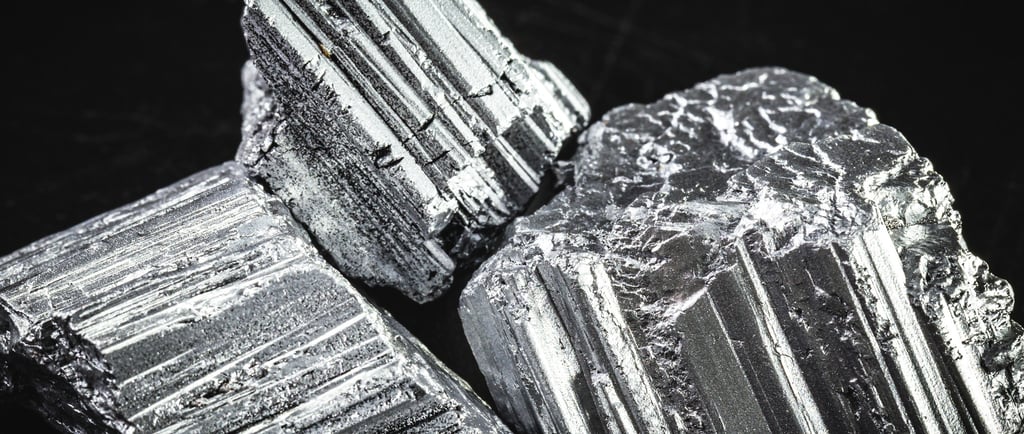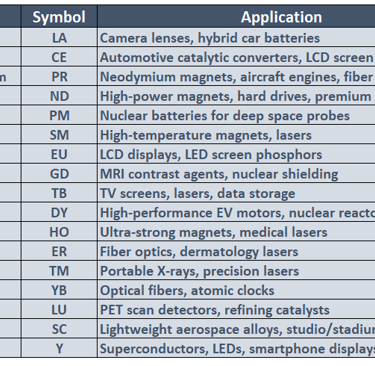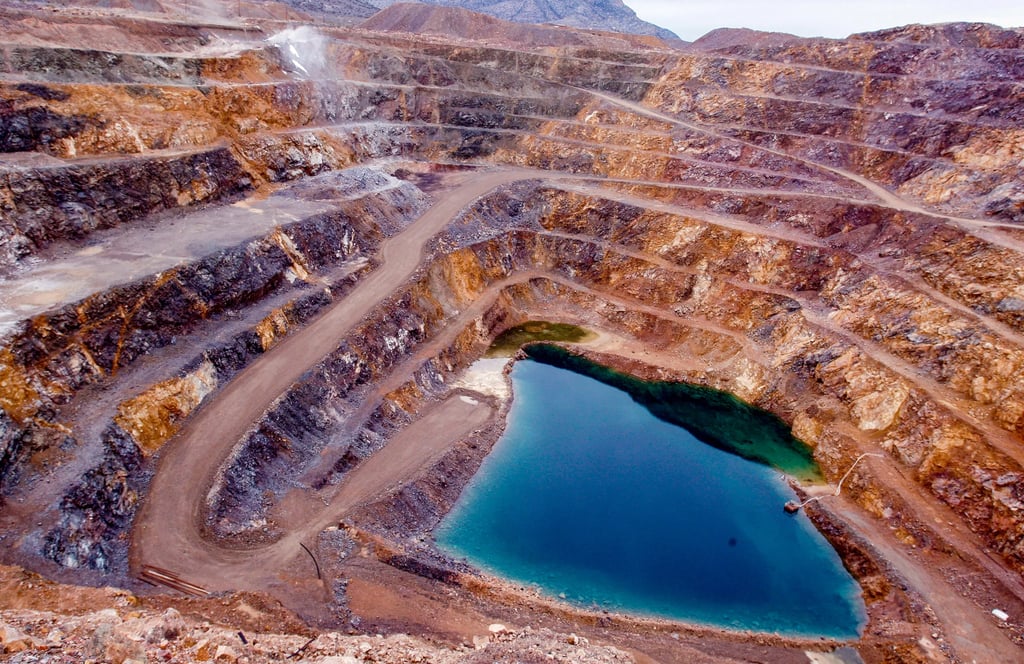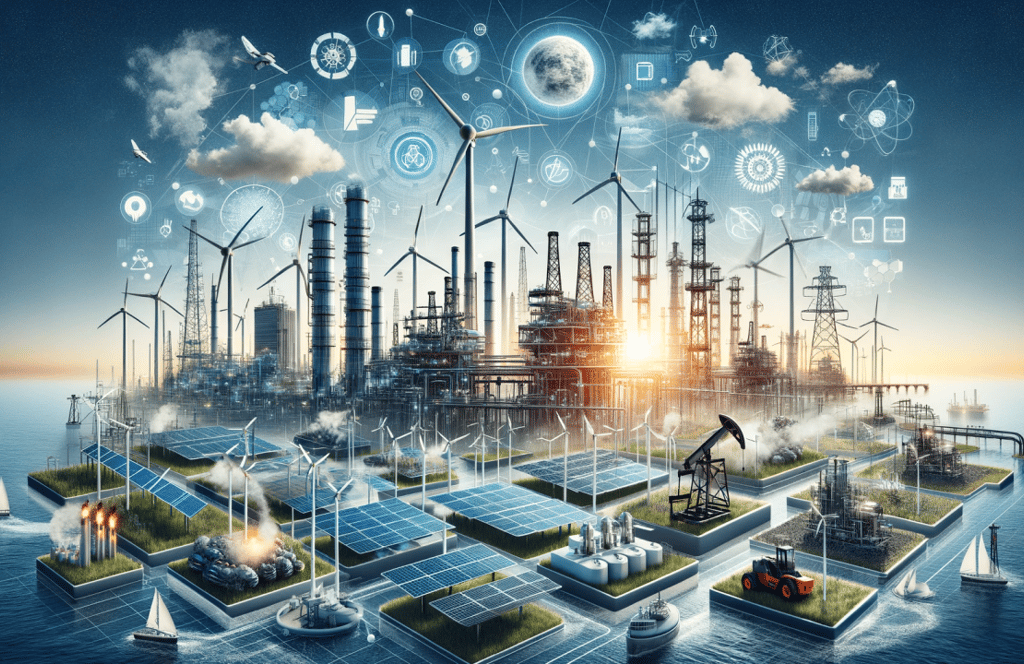Rare Earth Elements:
The Critical Materials Powering the Modern World — and the Global Controversy Behind Them


What Are Rare Earth Elements?
Rare Earth Elements (REEs) are a group of 17 chemically similar metallic elements within the lanthanide series of the periodic table, along with scandium and yttrium. Despite their misleading name, these elements are relatively abundant in Earth’s crust but are seldom concentrated in economically extractable deposits, making their mining both challenging and geopolitically sensitive.
Renowned for their exceptional optical, magnetic, catalytic, and electrical properties, REEs are indispensable for the functionality and advancement of a wide array of cutting-edge technologies — ranging from high-performance permanent magnets and electric vehicle drivetrains to fiber optic communications, aerospace systems, renewable energy infrastructure, and emerging fields such as quantum computing and advanced medical imaging.
Their critical role in enabling both the digital economy and the global energy transition has positioned them as strategic resources, central to both industrial innovation and international power dynamics.
Why Are Rare Earths So Important?
Rare earth elements (REEs) are the indispensable, often overlooked, enablers of modern civilization. These strategically vital metals form the backbone of countless advanced technologies, silently powering the digital, renewable, and defense sectors. Without them, the infrastructure of contemporary life — from smartphones and electric vehicles to aerospace systems and quantum computing — would be fundamentally impossible.
Key Applications of Rare Earths Include:
High-performance smartphones, laptops, and data storage devices
Electric vehicle (EV) motors, regenerative braking systems, and battery management
Wind turbines and photovoltaic solar panels for renewable energy generation
Military-grade defense systems, including radar, missile guidance, and stealth technology
LED lighting, advanced display screens, and medical imaging devices
Next-generation virtual reality (VR) and augmented reality (AR) platforms
Neodymium (Nd) and Praseodymium (Pr), for instance, are indispensable in the fabrication of Neodymium-Iron-Boron (NdFeB) permanent magnets — the most powerful commercially available magnets known. These materials are critical for the miniaturization and efficiency of high-performance electric motors, magnetic resonance imaging (MRI) systems, and precision-guided aerospace components.
As the world accelerates toward a digitally interconnected, decarbonized future, the demand for rare earth elements is expected to surge dramatically, solidifying their status as strategic resources at the heart of technological sovereignty and global power competition.
🌍 Geopolitical Control and Strategic Risks of Rare Earth Elements (REEs)
As of 2024, China maintains an overwhelming dominance over the global rare earth elements (REE) market, controlling more than 80% of both production and refining capacity. This monopolistic control has escalated into a critical geopolitical issue, exposing severe strategic vulnerabilities for technologically dependent nations and global supply chains.
Historically, China has strategically leveraged its REE dominance as an economic and political tool, implementing export restrictions during international trade disputes to exert pressure on rival economies. This tactic has raised alarms across the global technology and defense sectors, which are heavily reliant on stable access to these essential materials.
In response, major economies such as the United States, the European Union, and Japan have prioritized the development of domestic mining, refining, and recycling initiatives to mitigate reliance on Chinese-sourced REEs. Additionally, resource-rich nations like Australia, Brazil, and Canada have emerged as pivotal strategic allies in the effort to diversify and secure global rare earth supply chains.
Recent Developments:
In 2024, the geopolitical friction intensified when the United States formally filed a complaint with the World Trade Organization (WTO) against China, following new Chinese export restrictions on gallium and germanium — two critical elements associated with semiconductor manufacturing and rare earth extraction. This move highlighted the broader vulnerabilities within the global technology ecosystem and underscored the importance of establishing resilient, diversified REE sourcing strategies for future industrial and military applications.
🌿 The Environmental and Human Cost of Rare Earth Element (REE) Extraction
While rare earth elements (REEs) are indispensable for enabling the green energy transition, advanced electronics, and next-generation defense systems, their extraction and processing are associated with profound environmental and socio-economic consequences that remain largely underreported in mainstream discussions.
🌍 Environmental Impacts of REE Mining:
The extraction of rare earths often involves open-pit mining, acid leaching, and solvent extraction processes, which contribute to:
Extensive land degradation and biodiversity loss, disrupting fragile ecosystems.
The release of toxic chemical waste, including ammonium sulfate and hydrochloric acid, leading to heavy metal contamination of surrounding soils and water systems.
The generation of radioactive by-products, primarily uranium and thorium, which pose long-term environmental hazards and require specialized containment measures often neglected in informal operations.
⚠️ Human Rights, Labor, and Ethical Concerns:
Beyond ecological damage, REE supply chains are frequently linked to severe human rights violations and exploitative labor practices:
Documented reports of unsafe working conditions and exposure to hazardous materials in artisanal and small-scale mining operations, particularly across parts of Africa and Southeast Asia.
Persistent allegations of child labor in unregulated mining regions, driven by the global demand for rare earth-dependent technologies.
Monopolistic market structures and opaque supply chain governance, predominantly under state-controlled enterprises, exacerbate ethical risks and hinder global transparency initiatives.
As the global demand for rare earths surges, these environmental and humanitarian challenges underscore the urgent need for responsible mining frameworks, ethical sourcing standards, and scalable recycling technologies to decouple technological progress from ecological degradation and social injustice.
⚛️ Are Rare Earth Elements the “New Oil” of the 21st Century?
In the rapidly evolving landscape of digital infrastructure, renewable energy, and advanced defense systems, many analysts and geopolitical strategists now regard rare earth elements (REEs) as the strategic resources of the 21st century, often dubbing them the “new oil” of the digital and green energy revolutions. As global economies aggressively transition toward electric vehicles (EVs), AI-driven defense systems, and decarbonized power grids, the demand for REEs is experiencing an unprecedented surge.
Neodymium (Nd), for instance, plays a pivotal role in this technological shift. A single utility-scale wind turbine can require up to 600 kilograms of neodymium for its high-performance permanent magnet generators, crucial for converting kinetic wind energy into reliable electrical power. These NdFeB (neodymium-iron-boron) magnets are prized for their unparalleled magnetic strength-to-weight ratio, enabling more compact, efficient, and durable electric motors and generators.
⚙️ Geek Fact:
Beyond its role in renewable energy, neodymium-doped yttrium aluminum garnet (Nd:YAG) lasers have become essential tools in fields ranging from industrial precision cutting and advanced medical surgeries to quantum computing research. These lasers exploit the unique energy level transitions of neodymium ions to generate highly coherent, high-intensity beams, making them indispensable in both commercial and experimental applications.
This convergence of material science, energy transition, and strategic geopolitics positions rare earths as not merely commodities, but as critical enablers of the next industrial paradigm.
Final Reflections
Far from being mere footnotes in chemistry textbooks, rare earth elements (REEs) have evolved into indispensable pillars of 21st-century civilization, enabling technologies as ubiquitous as your smartphone’s haptic engine to as ambitious as deep-space propulsion systems and quantum computing infrastructures. These elements underpin virtually every sector driving the Fourth Industrial Revolution, from renewable energy grids and AI-powered defense systems to advanced medical imaging and augmented reality platforms.
Yet, the intensifying global race to secure these critical materials for future technologies exposes deeper, often overlooked challenges — including severe environmental degradation, geopolitical supply chain vulnerabilities, and unresolved questions surrounding human rights, resource nationalism, and ethical material stewardship. The paradox lies in their dual role: essential to a sustainable, decarbonized future, yet burdened by extraction processes that risk undermining the very ecosystems and communities that green technologies aim to protect.
As demand escalates, the imperative to establish transparent, diversified, and ethically governed REE supply chains will define not just the next chapter of technological innovation, but also the future of environmental justice and global industrial diplomacy.
If you want to dive deep into the topics we discussed before, here are some links to websites you should enter:
“Rare earth elements: A review of applications, occurrence, and environmental impact” (ScienceDirect, 2019) offers a comprehensive survey of REE geochemistry, processing technologies, and environmental considerations: https://www.sciencedirect.com/science/article/pii/S1674987119300258?utm_
USGS Fact Sheet “The Rare‑Earth Elements—Vital to Modern Technologies” reiterates the lanthanoid definitions and highlights economic deposit challenges : https://pubs.usgs.gov/fs/2014/3078/pdf/fs2014-3078.pdf?utm_
“Clean energy could lead to scarce materials” (MIT News, 2012) examines how renewable technologies drive surging REE demand: https://news.mit.edu/2012/rare-earth-alternative-energy-0409?utm_
“The Consequences of China’s New Rare Earths Export Restrictions” (CSIS, April 2025) analyzes China’s export licensing and its impact on global supply chains: https://www.csis.org/analysis/consequences-chinas-new-rare-earths-export-restrictions?utm_
“Why rare earths are the new oil” (VanEck Whitepaper, 2023) draws parallels between REEs and petroleum in driving global energy transitions: https://www.vaneck.com/globalassets/home/ucits/sales/whitepaper-why-rare-earths-are-the-new-oil.pdf?utm_








